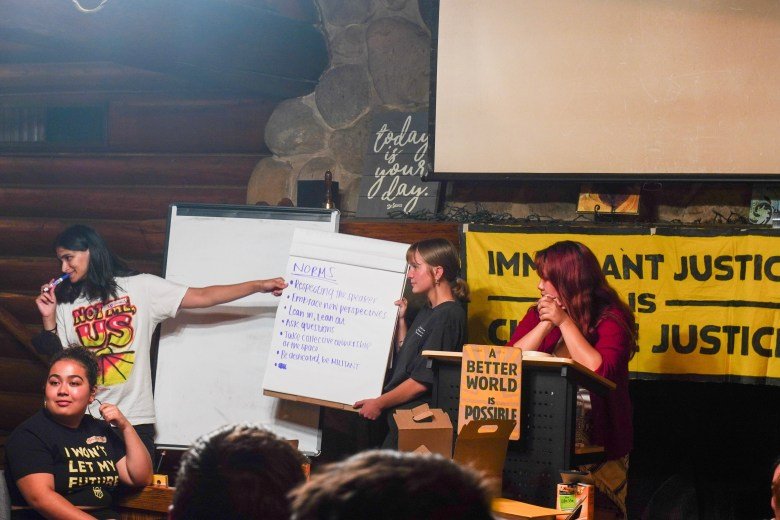Education
AI Tools Can Strengthen Medical Education: Google

As the global health workforce faces a projected shortage of over 11 million professionals by 2030, Google explores the potential role of AI in reshaping medical education, aiming to support students and educators in healthcare training.
The company presented two studies on the subject. The first, Generative AI for Medical Education: Insights from a Case Study with Medical Students and an AI Tutor for Clinical Reasoning, published at CHI 2025, examined how medical learners interact with an AI tutor prototype. Using workshops, prototyping, and user studies, researchers observed interest in AI tools that can adjust to individual needs, provide constructive feedback, and encourage critical thinking.
The second study assessed LearnLM, Google’s Gemini-based family of models fine-tuned for learning. Conducted with medical students and physician educators, the research compared LearnLM with a base model through 50 synthetic evaluation scenarios covering preclinical and clinical topics. Across 290 conversations, physician educators consistently preferred LearnLM, particularly for demonstrating pedagogy and behaving more like a skilled human tutor. Students rated LearnLM more positively in terms of overall enjoyment and interaction.
Both studies suggest that generative AI tools can support the development of clinical reasoning skills, while providing scalable alternatives for addressing gaps in health education. No patient data was used in the studies, and the evaluations emphasized responsible implementation with human oversight.
Google presented these findings at the MedEd on the Edge conference, underscoring the need to prepare curricula that not only incorporate AI as a tool but also teach future professionals how to understand and use the technology responsibly. With the integration of LearnLM capabilities into Gemini 2.5 Pro, the company aims to continue collaborating with educators to design personalized learning experiences that strengthen the healthcare workforce.
Education
Why Hotels Struggle with Tech Adoption, And How AI + Education Can Drive Digital Transformation

Ask any hotelier what frustrates them about technology, and you’ll hear a familiar refrain:
“Why does our industry lag so far behind in digital transformation and AI?”
Compared to retail, travel tech, and even restaurants, hotels adopt operational technology at a crawl.
We know the common reasons:
- Past tech projects that didn’t deliver ROI.
- Solutions that felt designed in boardrooms, not lobbies.
- Budgets stretched thinly by OTAs and rising costs.
All true. But in my 15+ years in hospitality tech, I’ve seen a deeper barrier, one that explains why even when budgets are available, adoption still stalls.
🚨 The biggest barrier is hoteliers’ lack of clear understanding about the quantifiable value of technology, especially AI-driven tools, in daily operations.
Understanding Before Adoption
Hospitality is a pragmatic business. Owners and GMs don’t adopt tools because they’re trendy; they adopt when they understand:
- WHAT is the solution and the problem it solves,
- HOW it works in a hotel context,
- WHY is it the right fit for their specific operation.
Without this clarity, skepticism wins. And digital transformation and AI stalls.
AI in Hospitality: Marketing vs Operations
Right now, most AI adoption in hotels is happening at the guest-facing edge:
- Chatbots for direct booking,
- Automated email offers,
- Upselling engines.
These feel safe: they’re visible, promise revenue, and rarely touch core operations.
But the bigger opportunity lies in operational AI:
- Scheduling staff with fairness and efficiency,
- Assigning rooms based on readiness and preferences,
- Optimizing energy usage,
- Predicting maintenance before breakdowns.
The irony? These are the areas where AI delivers the fastest ROI. Yet adoption is lowest because hoteliers don’t clearly see the value until it’s proven in their own P&L.
Why Digital Transformation Stalls Without Education
The word “digital transformation” can intimidate smaller properties. It sounds like a multimillion-dollar IT overhaul.
But when explained simply, it’s not about technology replacing hospitality, it’s about using AI and digital tools to remove friction from staff and guests alike.
The real obstacle isn’t the tech. It’s the education gap:
- Vendors pitch features instead of explaining workflows.
- Hoteliers hear jargon instead of ROI.
- The conversation skips the basics, the WHAT, HOW, and WHY.
From Confusion to Confidence: The WHAT, HOW, WHY Framework
If we want adoption, we need to reset the conversation.
✅ WHAT→ Define the category in plain terms (RMS, CRM, AI scheduler).
✅ HOW→ Show how it integrates into hotel life without disruption.
✅ WHY → Share specific, quantifiable ROI proven by peers.
This is how we move hoteliers from fear to trust, and from hesitation to adoption.
Quick Wins: The Proof Hotels Need
Digital transformation doesn’t need to begin with massive projects. It can start with quick AI wins that build confidence:
- Staff Scheduling AI → Cuts overtime, reduces turnover, shows ROI in 2–3 payrolls.
- Room Assignment AI → Prevents “not-ready” complaints, improves guest satisfaction.
- Energy Optimization AI → Lowers bills immediately; frees budget for guest-facing upgrades.
- Predictive Maintenance AI → Avoids costly outages, extending asset life.
Each of these is a small but powerful step that makes digital transformation feel real , not theoretical.
A Real Case Study: DoubleTree by Hilton Dartford Bridge
One striking example comes from the DoubleTree by Hilton Dartford Bridge a 170-room hotel in East London. Struggling under steep energy costs and system inefficiencies, the hotel partnered with Spacewell Energy and GETGEN to transform its infrastructure with AI-enhanced systems, without compromising guest comfort. Spacewell | A Nemetschek Company
What they did:
- Conducted a feasibility study of energy systems and identified inefficiencies in their Building Management System (BMS).
- Installed a purpose-built energy center with three Combined Heat & Power (CHP) units supplying electricity and hot water more efficiently.
- Upgraded controls via a modern Tridium BMS, added variable speed drives, and optimized system controls across guest areas. Spacewell | A Nemetschek Company
Results achieved within 12 months:
- Energy cost reduction: 65%, saving approximately £376,911
- Operational and sustainability uplift: advanced integration ready for predictive maintenance and further efficiencies Spacewell | A Nemetschek Company
Why This Matters for Smaller Hotels
Hospitality is under pressure. Labor shortages. Rising costs. Fierce OTA competition.
Hotels that delay digital transformation risk more than inefficiency. They risk irrelevance.
But hotels that adopt AI-powered operational tools strategically, with education and trust, can:
- lower costs,
- improve staff morale,
- and deliver smoother guest experiences.
That’s not just transformation. That’s a competitive advantage.
While large chains like Hilton can pilot and scale AI-enhanced systems, many small and mid-size hotels are still running technology in silos, a PMS here, a booking engine there, housekeeping schedules in Excel, energy systems on manual control. The result? Data stays fragmented, processes remain manual, and managers lack a single view of performance.
The good news is that cloud delivery has changed the economics of digital transformation. What once required servers, IT staff, and multi-year rollouts can now be deployed modularly, paid for as a subscription, and scaled with occupancy.
That’s why now, not “someday”, is the moment for independents and mid-size hotels to step forward. The cloud makes it possible to unify operations, start with one AI-powered quick win, and expand without heavy risk or capital investment.
Enter: The AIDURIX Compass
This is exactly why we built the AIDURIX Compass, not as another tech product, but as a navigation system for hoteliers starting their digital journey.
The Compass is designed to help hotels:
- Identify the biggest operational friction points,
- Understand the WHAT, HOW, and WHY available AI tools,
- Choose quick-win pilots that prove ROI fast,
- Build confidence to scale transformation step by step.
Because here’s the truth: digital transformation in hospitality isn’t a giant leap. It’s a guided journey. And every journey needs a compass.
The Call to Vendors
If you’re a tech vendor: stop overselling features. Start overeducating the market. When hoteliers understand categories, they buy confidently.
The Call to Hoteliers
If you’re a hotel leader: don’t fear “digital transformation.” Start small. Pick one AI-powered quick win. Track ROI. Build momentum.
But don’t chart the journey blind. That’s why we created the AIDURIX Compass — a navigation tool to help you spot operational friction points, explore AI solutions, and design a transformation path that fits your property’s size, staff, and goals.
🚀 Ready to see it in action? Test-drive the interactive demo here: AIDURIX Compass Demo
Education
Empowering Educators: Unveiling AI's Role in Modern Classrooms – Devdiscourse
Education
Students, schools race to save clean energy projects in face of Trump deadline

Tanish Doshi was in high school when he pushed the Tucson Unified School District to take on an ambitious plan to reduce its climate footprint. In Oct. 2024, the availability of federal tax credits encouraged the district to adopt the $900 million plan, which involves goals of achieving net-zero emissions and zero waste by 2040, along with adding a climate curriculum to schools.
Now, access to those funds is disappearing, leaving Tucson and other school systems across the country scrambling to find ways to cover the costs of clean energy projects.
The Arizona school district, which did not want to impose an economic burden on its low-income population by increasing bonds or taxes, had expected to rely in part on federal dollars provided by the Biden-era Inflation Reduction Act, Doshi said.
But under HR1, or the “one big, beautiful bill,” passed on July 4, Tucson schools will not be able to receive all of the expected federal funding in time for their upcoming clean energy projects. The law discontinues many clean energy tax credits, including those used by schools for solar power and electric vehicles, created under the IRA. When schools and other tax-exempt organizations receive these credits, they come in the form of a direct cash reimbursement.
At the same time, Tucson and thousands of districts across the country that were planning to develop solar and wind power projects are now forced to decide between accelerating them to try to meet HR1’s fast-approaching “commence construction” deadline of June 2026, finding other sources of funding or hitting pause on their plans. Tina Cook, energy project manager for Tucson schools, said the district might have to scale back some of its projects unless it could find local sources of funding.
“Phasing out the tax credits for wind and solar energy is going to make a huge, huge difference,” said Doshi, 18, now a first-year college student. “It ends a lot of investments in poor and minority communities. You really get rid of any notion of environmental justice that the IRA had advanced.”
The tax credits in the IRA, the largest legislative investment in climate projects in U.S. history, had marked a major opportunity for schools and colleges to reduce their impact on the environment. Educational institutions are significant contributors to climate change: K-12 school infrastructure, for example, releases at least 41 million metric tons of emissions per year, according to a paper from the Annenberg Institute at Brown University. The K-12 school system’s buses — some 480,000 — and meals also produce significant emissions and waste. Clean energy projects supported by the IRA were helping schools not only to limit their climate toll but also to save money on energy costs over the long term and improve student health, advocates said.
As a result, many students, consultants and sustainability leaders said, they have no plans to abandon clean energy projects. They said they want to keep working to cut emissions, even though that may be more difficult now.
Related: Become a lifelong learner. Subscribe to our free weekly newsletter featuring the most important stories in education.
Sara Ross, cofounder of UndauntedK12, which helps school districts green their operations, divided HR1’s fallout on schools into three categories: the good, the bad and the ugly.
On the bright side, she said, schools can still get up to 50 percent off for installing ground source heat pumps — those credits will continue — to more efficiently heat schools. The network of pipes in a ground source pump cycles heat from the shallow earth into buildings.
In the “bad” category, any electric vehicle acquired after Sept. 30 of this year will not be eligible for tax credits — drastically accelerating the IRA’s phase-out timeline by seven years. That applies to electric school buses as well as electric vehicle charging stations at schools. EPA’s Clean School Bus Program still exists for two more years and covers two-thirds of the funding for all electric school buses districts acquire in that time. The remaining one-third, however, was to be covered by federal and state tax credits.
The expiration of the federal tax credits could cost a district up to $40,000 more per vehicle, estimated Sue Gander, director of the Electric School Bus Initiative run by the nonprofit World Resources Institute.
Related: So much for saving the planet. Climate jobs, and many others, evaporate for 2025 grads
Solar projects will see the most “ugly” effects of HR1, Ross said.
Los Angeles Unified School District is planning to build 21 solar projects on roofs, carports and other structures, plus 13 electric vehicle charging sites, as part of an effort to reduce energy costs and achieve 100 percent renewable energy by 2040. The district anticipated receiving around $25 million in federal tax credits to help pay for the $90 million contract, said Christos Chrysiliou, chief eco-sustainability officer for the district. With the tight deadlines imposed by HR1, the district can no longer count on receiving that money.
“It’s disappointing,” Chrysiliou said. “It’s nice to be able to have that funding in place to meet the goals and objectives that we have.”

LAUSD is looking at a small portion of a $9 billion bond measure passed last year, as well as utility rebates, third-party financing and grants from the California Energy Commission, to help make up for some of the gaps in funding.
Many California State University campuses are in a similar position as they work to install solar to meet the system’s goal of carbon neutrality by 2045, said Lindsey Rowell, CSU’s chief energy, sustainability and transportation officer.
Tariffs on solar panel materials from overseas and the early sunsetting of tax credits mean that “the cost of these projects are becoming prohibitive for campuses,” Rowell said.
Sweeps of undocumented immigrants in California may also lead to labor shortages that could slow the pace of construction, Rowell added. “Limiting the labor force in any way is only going to result in an increased cost, so those changes are frightening as well,” she said.
New Treasury Department guidance, issued Aug. 15, made it much harder for projects to meet the threshold needed to qualify for the tax credits. Renewable energy projects previously qualified for credits once a developer spent 5 percent of a project’s cost. But the guidelines have been tightened — now, larger projects must pass a “physical work test,” meaning “significant physical labor has begun on a site,” before they can qualify for credits. With the construction commencement deadline looming next June, these will likely leave many projects ineligible for credits.
“The rules are new, complex [and] not widely understood,” Ross said. “We’re really concerned about schools’ ability to continue to do solar projects and be able to effectively navigate these new rules.”
Schools without “fancy legal teams” may struggle to understand how the new tax credit changes in HR1 will affect their finances and future projects, she added.
Some universities were just starting to understand how the IRA tax credits could help them fund projects. Lily Strehlow, campus sustainability coordinator at the University of Wisconsin, Eau-Claire, said the planning cycle for clean energy projects at the school can take ten years. The university is in the process of adding solar to the roof of a large science building, and depending on the date of completion, the project “might or might not” qualify for the credits, she said.
“At this point, everybody’s holding their breath,” said Rick Brown, founder of California-based TerraVerde Energy, a clean energy consultant to schools and agencies.
Brown said that none of his company’s projects are in a position where they’re not going to get done, but the company may end up seeing fewer new projects due to a higher cost of equipment.
Tim Carter, president of Second Nature, which supports climate work in education, added that colleges and universities are in a broader period of uncertainty, due to larger attacks from the Trump administration, and are not likely to make additional investments at this time: “We’re definitely in a wait and see.”
Related: A government website teachers rely on is in peril
For youth activists, the fallout from HR1 is “disheartening,” Doshi said.
Emma and Molly Weber, climate activists since eighth grade, said they are frustrated. The Colorado-based twins, who will start college this fall, helped secure the first “Green New Deal for Schools” resolution in the nation in the Boulder Valley School District. Its goals include working toward a goal of Zero Net Energy by 2050, making school buildings greener, creating pathways to green jobs and expanding climate change education.

“It feels very demoralizing to see something you’ve been working so hard at get slashed back, especially since I’ve spoken to so many students from all over the country about these clean energy tax credits, being like, ‘These are the things that are available to you, and this is how you can help convince your school board to work on this,’” Emma Weber said.
The Webers started thinking about other creative ways to pay for the clean energy transition and have settled on advocating for state-level legislation in the form of a climate superfund, where major polluters in a community would be responsible for contributing dollars to sustainability initiatives.
Consultants and sustainability coordinators said that they don’t see the demand for renewable energy going away. “Solar is the cheapest form of energy. It makes sense to put it on every rooftop that we can. And that’s true with or without tax credits,” Strehlow said.
Contact editor Caroline Preston at 212-870-8965, via Signal at CarolineP.83 or on email at preston@hechingerreport.org.
This story about tax credits was produced by The Hechinger Report, a nonprofit, independent news organization focused on inequality and innovation in education. Sign up for the Hechinger newsletter.
-

 Business2 weeks ago
Business2 weeks agoThe Guardian view on Trump and the Fed: independence is no substitute for accountability | Editorial
-
Tools & Platforms1 month ago
Building Trust in Military AI Starts with Opening the Black Box – War on the Rocks
-

 Ethics & Policy2 months ago
Ethics & Policy2 months agoSDAIA Supports Saudi Arabia’s Leadership in Shaping Global AI Ethics, Policy, and Research – وكالة الأنباء السعودية
-

 Events & Conferences4 months ago
Events & Conferences4 months agoJourney to 1000 models: Scaling Instagram’s recommendation system
-

 Jobs & Careers2 months ago
Jobs & Careers2 months agoMumbai-based Perplexity Alternative Has 60k+ Users Without Funding
-

 Podcasts & Talks2 months ago
Podcasts & Talks2 months agoHappy 4th of July! 🎆 Made with Veo 3 in Gemini
-

 Education2 months ago
Education2 months agoMacron says UK and France have duty to tackle illegal migration ‘with humanity, solidarity and firmness’ – UK politics live | Politics
-

 Education2 months ago
Education2 months agoVEX Robotics launches AI-powered classroom robotics system
-

 Funding & Business2 months ago
Funding & Business2 months agoKayak and Expedia race to build AI travel agents that turn social posts into itineraries
-

 Podcasts & Talks2 months ago
Podcasts & Talks2 months agoOpenAI 🤝 @teamganassi




















